Celebrating the Class of 2020
“A virtual commencement,” Keel said via Microsoft Teams. “I never thought I’d see those two words in any one sentence — I don’t think anyone did.”
President Brooks Keel
Play Video
AT A DISTANCE, BUT TOGETHER
For Dr. Brooks Keel, Friday, May 29, 2020, was a day like any other in the now-pandemic world. As president of Augusta University, he was fully engaged in the virtual meeting space that had become standard since the coronavirus had forced the university, like every other university in the University System of Georgia and most other institutions across the globe, to transition to distanced communication as much as possible. He had an interview in a couple of hours, a meeting with leadership later that morning and a host of the other demands that happen when you are, as he’d famously declared on numerous occasions, “open for business.”
But at the same time, because “open for business” no longer meant “business as usual,” it was a day unalike any other. More to the point, what was happening the next day was about as far from “business as usual” as you could get: Virtual Commencement.
“A virtual commencement,” Keel said via Microsoft Teams. “I never thought I’d see those two words in any one sentence — I don’t think anyone did.”
And yet a little over 24 hours later, that’s just what happened: 1,250 graduating students from the university’s 10 colleges and schools experienced the ringing of the Arsenal Bell; they heard from Keel and then-Provost Gretchen Caughman; they heard from their deans and from a student speaker; and they heard their names read. But there was no handshake. There was no walk across the stage. The recognition of their achievement, like the concluding of their semester, contained only as much as “open for business” would allow.
“A virtual commencement,” Keel said via Microsoft Teams. “I never thought I’d see those two words in any one sentence — I don’t think anyone did.”
President Brooks Keel
“Our students have gone through an incredible disruption,” Keel said. “They’ve gone through all the personal family disruptions that all of us have gone through but have also had to try to continue their education during all this chaos.”
None of that would have been possible, Keel said, without the dedication, support and innovation of Augusta University’s faculty.
“They are the unsung heroes in all of this,” he said. “In a matter of two weeks, literally, they converted a classical, traditional, face-to-face university into a totally online university. I don’t know of any group of individuals who have turned on a dime, accepted change, and made such an immediate change and impact than our faculty have. They managed it; they got through it; and they did it all with the best spirit I think I could have ever anticipated in the face of any crisis.”
Faculty were the tip of the spear for the massive and unprecedented effort that came from every corner of the institution, an effort with the shared priority of making sure students received the education, services and support they needed to close out the semester.
And of course none of this played out in a vacuum — it happened even as the participants were adjusting to emerging challenges and new realities that were changing on an almost moment-to-moment basis.
The new normal was now.
‘AT A DISTANCE, BUT TOGETHER’
Spearheading the preparation was the Team of 10, a group of representatives hand-picked by the dean of each college and school at the request of Dr. Zach Kelehear, then vice provost for instruction and now, after Caughman’s retirement, interim provost. Together with representatives from other key areas of the institution, this group did the unthinkable: they took the school from roughly 15% online classes to 100% online during the two-week span the university was shut down in March. A monumental task in the best of times, and these were far from the best of times.
“At the same time all this was happening, I was trying to get kids home from study abroad,” Kelehear said. “So when I wasn’t doing this, I was over talking to parents and talking to some embassy or to Washington, D.C., trying to figure out …”
His voice trailed off, leaving unsaid just how much there was to figure out.
“Then Peru says they’re going to close their borders; and no one can leave because no one can go in … so we were tuned up pretty tight for a while.”
As the vice provost for instruction, Kelehear oversaw everything that touched student learning, including study abroad, academic advising, career services, the Academic Success Center, the honors program, the Center for Undergraduate Research and Scholarship and both libraries — all areas that would need to do what they did in vastly different ways.
It was a time when a lot of people were thinking a lot about the concept of “normal.”
“This group normalized what otherwise would have been a totally abnormal reality,” he said. “They said, ‘Well — the students still matter; we’re still doing instruction: Let’s find a connection.’ So all that sort of undergirding — that infrastructure — of student academic support that I get to work with followed students even when they were gone.”
If the story of this success is about anything, he said, it’s about communication — not just developing the channels and recognizing the intersections, but the willingness to break down silos where they existed and collaborate further where they didn’t.
“It’s all about engagement,” he said. “Nothing matters until you’re connected. When you’re connected, everything’s possible.”
When you have the connection, Kelehear said, the content flows naturally. They just had to discover what a different kind of connection looked like now that they didn’t have that in-person contact.
And that’s where the Team of 10 came in.
THE TEAM OF 10
The Team of 10, which met frequently during the two-week ramp-up to going fully online, represented an aggressive attempt at learning what faculty were anxious about and what they needed. This allowed Kelehear to figure out how to support faculty as they worked their way through the challenges, particularly with instructional technologies and course design.
“We were meeting three times a week during those two weeks where we were suspended trying to figure out what we were going to do,” Kelehear said. “The Team of 10 went straight back to their faculty, gathered up questions, came right back, and we figured out solutions and made some decisions based on our university guidelines.”
Establishing that routine, he said, helped create an important communications pathway they continued to enjoy as the pandemic marched on.
According to Dr. Wes Kisting, associate dean at the Katherine Reese Pamplin College of Arts, Humanities, and Social Sciences and the college’s representative on the Team of 10, that communication started with Kelehear.
“I think he was probably getting few hours of sleep,” Kisting said. “I know he was getting messages from me and others in the middle of the night saying, ‘Hey — we’ve got another problem. How do we solve this?’ He didn’t always have the answers, because no one would, but he was very diligent about trying to come up with solutions as quickly as he could.”
It wasn’t just the immediate problems that required solving, Kisting said; they also needed to address the big picture so that they could get resources in place to keep problems from happening again or, if they did, to make sure they already knew how to deal with them.
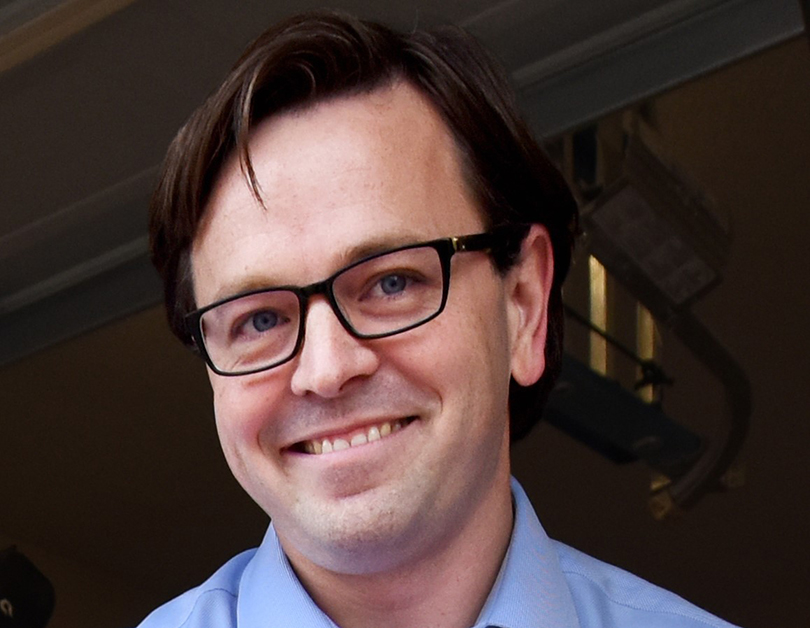
There were technical issues, but the big issues, the logistical and pedagogical ones — it was almost silent on that front. Faculty seemed to understand that we just needed to do whatever it took to continue instruction …
“Dr. Kelehear deserves a lot of credit for just doing what he could to form a group like the Team of 10 and to have a practice of inviting candor and easy accessibility at any hour of the day to say, ‘Let’s just talk about the problem, solicit some options or input from other people, figure out how we’re going to solve it and get it done,’” Kisting said.
While each college or school faced its own unique challenges, at Pamplin, the liberal arts college, instruction involved traditional lectures as well as performance and production, all of which came with their own individual challenges.
“There were technical issues, but the big issues, the logistical and pedagogical ones — it was almost silent on that front,” Kisting said. “Faculty seemed to understand that we just needed to do whatever it took to continue instruction, hold students blameless for this disruption that was beyond their control, and make sure we could still satisfy the learning outcomes of our courses to the best of our abilities in the little time that remained.”
It was a steep learning curve to be sure, with most of those who relied heavily on real-time instructions and discussions adapting to Webex and Microsoft Teams, the two video tools provided and supported by the university. This included the music department, where music lessons relied on private one-on-one instruction. For art classes, faculty either found ways to get supplies to students or redesign assignments around items students would likely have access to or could easily order online. Discussion-format classes like literature classes ended up going to a series of short response papers or additional paper assignments designed to capture the kinds of analysis and interpretation that would normally be done collectively in a classroom.
“Education by any means necessary” became a rallying cry.
“In our college, a huge number had never taught online before, so that was a major adaptation to make almost literally overnight,” Kisting said. “So some of their stresses and concerns were related to the question, ‘After all these years of honing the quality of what I do and the rapport I build with my students in a face-to-face setting, how do I translate some meaningful portion of that into distance means so I’m not just teaching the students by giving them a bunch of content that satisfies contact hours, but I’m actually engaging them and making sure that they are really understanding — and getting feedback from them so I can verify that they understood?’”
Part of that was solved by sharing knowledge and information among the wider teaching audience — things that worked, things that didn’t — but a lot of it was made possible by the work done by teams from the Center for Instructional Innovation and the Division of Information Technology.
TECHNOLOGY SOLUTIONS TO INSTRUCTIONAL PROBLEMS
As an instructional designer in the Center for Instructional Innovation, Stacy Kluge is used to breaking down problems into solvable steps, and the problem Kelehear gave her was a doozy.
“We knew there was a wide range of needs,” Kluge said. “Probably some faculty had never taught online or even used the learning management system (LMS) even slightly to augment their face-to-face learning. Others had sort of an intermediate level of proficiency. Then, there were others who taught fully online. So the question became: How do we come up with a quick solution for all of these people?”
The thing about quick solutions — they’re often the most complex to create.
“The first thing we did was identify the basic functions of teaching and communication,” she said. “Then, we matched those to the appropriate applications and provided some instructions around those. Although we didn’t have time to polish these instructions as much as we would have liked, given the two weeks, they did their job.”
This work was aided by the University System of Georgia (USG), which exported a guide to online teaching that Kluge was able to significantly modify for Augusta University’s specific needs.
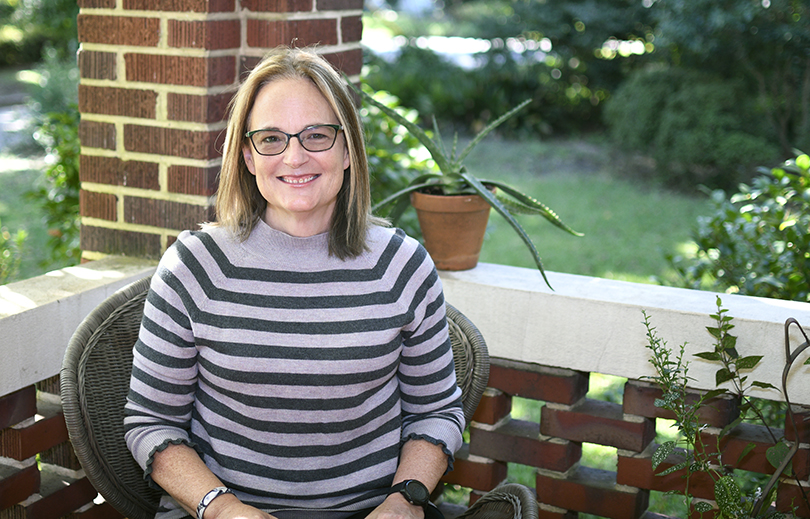
We knew there was a wide range of needs … so the question became: How do we come up with a quick solution for all of these people?
They had conceptualized online instruction in three different ways. The simplest — education primarily through email — wasn’t necessarily ideal, but they knew that was the level where some faculty and students were going to be. The second involved video conferencing. The most experienced with online education received instruction in the learning management system.
“I’m sure there were a lot of them that did a mix between the LMS and video conferencing,” she said.
Each of these courses started with an overview, and as the faculty member drilled down into it, they were exposed to some best practices along with some technical tutorials and tips.
“It’s a combination of really light best practices and instructional design guidance along with the main technology components you would need to get started,” she said.
They also kicked off some Webex sessions on how to transition a course online.
“The majority of our guidance to faculty was delivered as needed, but initially our team also offered a handful of webinars,” Kluge said. “Fortunately, the instructional systems analysts (ISAs) took over the live sessions because they were better positioned to offer trainings more regularly and over a wider range of systems and technologies.”
ASKING THE EXPERTS
The ISAs, technology experts assigned to each of the colleges and schools, are part of Amy Triana’s team in the Information Technology division. The ISAs are analysts who have been helping the colleges with their technology needs since 2010.
“We were well-positioned, I think, before everything started because we had all those relationships already in place,” Triana said. “The ISAs had been helping faculty with online content, even when the classes were in person.”
These ISAs followed up after faculty received their guidance from the instructional design teams on best practices and the tools available to them. They answered questions surrounding the tools, which included Webex and D2L, the university’s learning management system (LMS), and Microsoft Teams, which quickly became the gold standard substitute for face-to-face encounters with students, colleagues and administration, who had been sent home along with everyone else.
Microsoft Teams had been approved for use in December 2019, and even though some had been trying it out and IT was encouraging adoption as much as it could, it hadn’t really caught on until the pandemic.
“It’s been an enormous tool,” Triana said. “I can’t imagine going through this without the ability to quickly chat with someone or have a nice, easy interface for web meetings.”
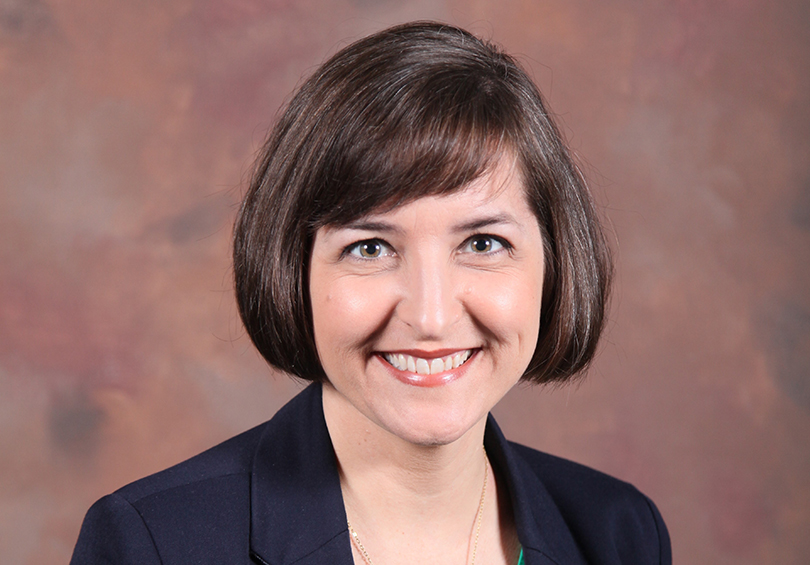
Microsoft Teams had a use far beyond faculty and staff preparation and communication, however: it had features that made it an important tool for students as well.
With Microsoft Teams, faculty could break up their students into groups in different channels so they could monitor the work the students were doing without subjecting the students to the noise generated by the other groups.
It was also used to tackle the tricky business of exam proctoring, as were Webex and other specialized programs, not all of which remained up and running during the early phase of the pandemic.
According to Triana, the remote proctoring solution used by the Doctor of Nursing Practice program in the College of Nursing went down due to a pandemic-induced shutdown before the end of the semester, causing a scramble to come up with a viable alternative for the final exams that were fast approaching.
“We just had to make it all work,” she said. “There were a lot of long days, but everyone worked to successfully get the exams off of one platform and onto another and train faculty and staff on how to use it.”
To provide this kind of service during the crisis, IT had to find a way to stand up a command center. And unlike the command centers that supported other crises, this one had to be remote.
This time, thanks to the help from the telecommunications group, when a caller would press a number after the prompt, it would take them to this help group.
A group of ISAs was also on hand for extended hours via Microsoft Teams, which Triana said was important when it came to helping the faculty feel supported.
“A lot of those faculty were not in a place mentally where they could just sit through some trainings and calmly and strategically figure out what they were going to do,” she said. “They needed to get some answers fast and get everything in place for their classes.”
According to Triana, volume at these help centers reduced dramatically as time went on, clearing the way for giving more attention to student needs, which were ramping up as well.
LOOKING OUT FOR STUDENTS
While Kelehear, his Team of 10 and those assisting them were preparing faculty to deliver education remotely, that was only half the battle; they also had to help students prepare to receive that instruction, as well as manage the administrative and support tasks required to get them through a semester no one could have imagined.
“Students were at a point where they were saying, ‘Hey — I didn’t sign up for online learning: What’s this going to look like?’” Kelehear said. “So as we started asking, ‘How do we connect online?’ and, ‘How do we teach online?’ we had to simultaneously ask ‘How do we learn online?’”
No questions related to students can be tackled without the presence of Dr. Susan Davies, vice president for enrollment and student affairs. Kelehear, Davies and Caughman met often during those two weeks, first answering rudimentary but important questions like where the faculty and students were and how they could find each other, and then tackling problems like discovering the technology that would bring them together.
Because of the degree to which technology and academics are intertwined, particularly when the classroom is at home, IT was also part of these conversations.
And while student affairs is sometimes thought of as encompassing everything about a student’s college experience outside of the classroom, Kelehear was emphatic that it wasn’t the case here.
“I’ve never seen a student affairs group that’s so grounded in academics,” Kelehear said. “They are very much anchored in the academic success of this group.”
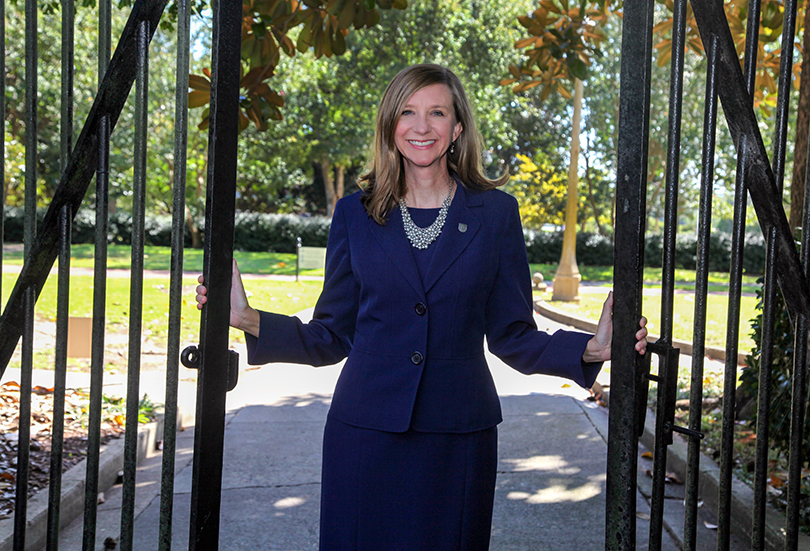
We really wanted our students to know that while we were at a distance, we were not apart; we were still supporting them. We know that it was challenging for our students to be disrupted over halfway into the semester.
When Keel had first called the task force together to start planning for the unplannable possibilities that lay before them, Davies’ division already had a crisis response plan at the ready. It lacked a lot of the critical specifics they were facing, naturally, but they had a basic framework to refer to and build upon, which proved important.
“[The Office of Critical Event Preparedness and Response] has worked closely with us to plan for hurricanes and tornados and other different events, but planning for a pandemic was not something there was a playbook for,” Davies said. “But the positive was, we did have a plan to start off with, and we really tried to continue to come back to that plan and to make sure, even in the midst of all this, we were being thoughtful about what we were doing, and I think it definitely helped us.”
Just as communication was central to the success of faculty preparedness, communication was a vital part of keeping students educated, safe and informed.
With this in mind, Davies and her team deployed several different resources, including a Virtual AU webpage and a series called 4 Things Students Need to Know Right Now. The former served as a growing clearinghouse for all the important resources that had been created for — or adjusted to fit — the now-pandemic world; the latter gave students a quick, digestible rundown of the most essential information they needed to know at the time, realizing, of course, that things were changing fast.
“We had five different versions of that over the course of probably two or three weeks,” she said.
According to Davies, a big advantage in this push to communicate resided with the students themselves.
“Our students are very, very resilient,” she said. “What’s great about having a student body where a large majority are focused on health care — they understood what was happening and that their safety was paramount. They were regretful about having to move out of the residence halls, particularly our freshmen who were missing out on their first year of college and all those experiences — and our seniors, who were not going to experience a typical commencement — but I think they understood.”
Managing a socially distanced move out was a huge and complicated undertaking.
“It was very quiet,” Davies said. “It was very orderly. Many of the students felt such regret that their first year of college was ending this way, but all of the parents and students were very understanding.”
Students moved out at assigned times and were limited in the number of guests they could bring in with them, and while the process certainly lacked the usual energy, Davies insisted it wasn’t somber or depressing.
“It was almost serene,” she said. “It was a very different experience than I’d had before, but folks were very compliant with everything we asked them to do.”
And while the pandemic forced so much into the virtual world, Davies made sure the students never lacked access to anything they needed.
“The Virtual AU webpage was a one-stop location for students to find all of the online resources Dr. Kelehear’s team had created on how to learn online, but it also contained all the ways they could interact with student services virtually,” she said.
That included student engagement programming, career services advising, telehealth provided by the Student Health Clinic and Student Counseling and Psychological Services — both of which needed to be stood up from scratch — and other resources.
Davies also refocused the Jags Care website in light of student needs during the pandemic — things like the student emergency fund, the food pantry and the loaner laptop program.
In addition, students received email newsletters, invitations to town halls and other vital communications.
“We strive to meet students where they are and to connect with them in a way that they can hear us and interact with us comfortably,” she said. “So in many ways, this forced us to really meet students in the virtual environment where they might feel a bit more comfortable.”
Another positive: increased collaboration.
“I was positively surprised at how quickly our silos came down and how well we were able to collaborate together to completely focus on serving those students,” she said. “I saw that in a variety of places in my own division, but also across campus. Even though we were apart and not on campus, I think this brought us closer together as a campus working to serve our students.”
Perhaps the biggest example of this collaboration came with the Jags Care phone campaign, where nearly 60 volunteers from across campus called more than 5,000 undergraduate students to make sure they were OK.
“We really wanted our students to know that while we were at a distance, we were not apart; we were still supporting them,” Davies said. “We know that it was challenging for our students to be disrupted over halfway into the semester.”
TECHNOLOGY TO STUDENTS
Getting the students the technology support they needed was a second part of Triana’s job. Her team worked with students who had gaps in their technology at home — identified by a survey managed by Davies’ group — by engaging them in a virtual space rather than at the existing service desks located on campus.
“We also built a course for students in our LMS for online learning, which had resources on how to use Microsoft Teams and how to navigate the LMS,” Triana said. “We also provided resources on maintaining good cybersecurity practices and how to get more network resources.”
Not only did some of the network companies offer services at a reduced — or even complimentary — cost, many of the critical software packages students were licensed to use on campus had to be amended to allow them to work from home.
While the 50 loaner laptops provided by the Georgia Cyber Center helped some students with their hardware needs, some classes required particular software programs to do the assignments or required a demonstration of proficiency in the use of certain programs, so Triana and her team worked with vendors to expand the licensing arrangements to allow students to use programs that would normally have been restricted to campus on their personal devices.
Some of these relationships were extended, and as the semester wore on, drive-up Wi-Fi zones were set up on campus so students wouldn’t have to get out of their cars and sit in an area that might have Wi-Fi outdoors.
“That’s not a great experience if you have to complete an assignment in your car — you may not have laptop power that lasts more than a couple of hours — but we wanted to be able to say definitely that this is where you can do that, that there is a devoted access point on this pole over here and it’s broadcasting a good signal for you,” Triana said.
SUPPORTING SUCCESS
Though at the time no one knew the full scope of the pandemic and the challenges it would bring, Dr. Lorraine Evans, executive director for the Academic Success Center (ASC), understood the impact it would have on student success, and she knew that while the look of the ASC’s support would be different, the need would be even greater.
It’s no secret that a change in circumstances can shake even the strongest foundation, and it’s hard to imagine a collective change in circumstances more significant than the global pandemic. Not only was health and well-being a concern, but many students found themselves back home, often out of work and frequently overwhelmed by the changes.
So the question facing Evans and her team was simple but profound: How do you ensure students continue to have access to the ASC when the ASC is physically closed?
“It’s fine to say we need to make sure students can get tutoring and peer coaching, but then, of course, the question is how,” Evans said. “That took a little more time.”
Like so many others, they learned to use Microsoft Teams, particularly the class channels, where students could just drop in, ask a couple of questions and then go offline. For the important one-on-one meetings, they learned to use the whiteboard function along with other elements.
During the two week shutdown, student workers practiced with themselves, practiced with each other and then demonstrated to staff that when campus opened virtually, they had worked out the kinks and were ready to go.
It’s fine to say we need to make sure students can get tutoring and peer coaching, but then, of course, the question is how. That took a little more time.
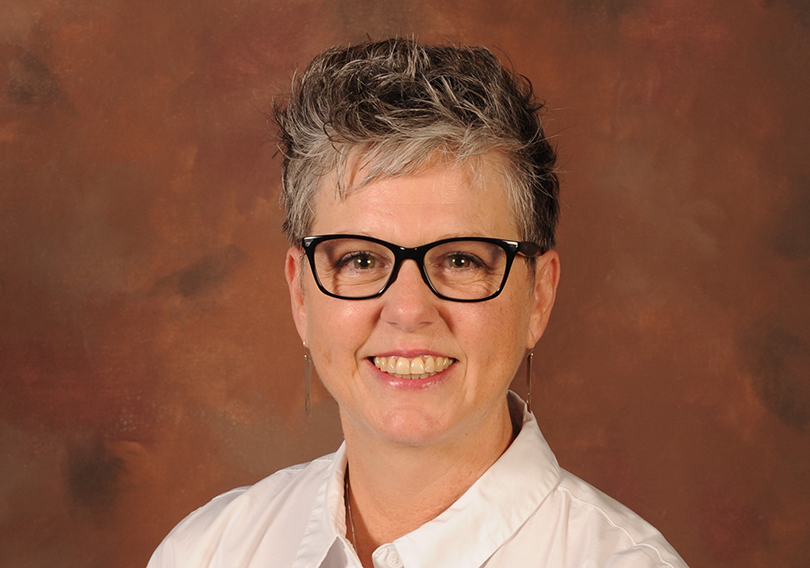
An added benefit of this preparation, Evans said, was that they were able to pay their student workers over the two weeks.
“It was great to see the student workers step up and take this on,” she said. “Nobody was like, ‘Why me? This isn’t what I signed up for.’ Everybody was just full-on trying to make it work better.”
Once the virtual ASC was up and running, they experienced an uptick in peer coaching, where the student workers help students with time management skills and studying techniques.
Given the drastic changes in study conditions and the disruption of routines, many students found themselves overwhelmed. They were used to having reliable, dedicated study spaces, and now they might be forced to share a computer and adapt to younger siblings running around.
“It’s a real adjustment,” Evans said. “So our peer coaches worked with them to figure out solutions to some of these things.”
And like many other campus entities, ASC worked hard at communication, making sure students didn’t get lost in the chaos that had engulfed so much of the world. They sent out their virtual progress reports asking faculty to identify students who hadn’t come back to class or signed in online. They reached out to those students, asking what help they needed to get back.
The different touch points, she said, were important.
“They got a message saying their faculty were concerned about them; they got a message from us saying we could offer support; and then Student Life did their Jags Care phone campaign,” she said. “I don’t think students had ever been contacted so much, but I think they needed it.”
That seamlessness of purpose, Evans said, was not only beneficial to the students, but it was inspiring to staff and student workers.
“If we needed something Student Life was doing, we just worked with Student Life, and we worked together to do it,” she said. “A lot of organic collaborations emerged to support students, with everybody coming up with ideas for keeping the students at the center, and that was really cool.”
And although she missed the energy of physically being in the ASC, she said she felt a special satisfaction from working with others to help students through this time of unprecedented change.
“One of Augusta University’s values is collegiality, and it really made a difference in making sure we were doing the right thing for the students,” she said. “The student-centeredness was just phenomenal. Everybody wanted to make sure the students had the best experience given the circumstances.”
CLOSING THE CHAPTER
Though the virtual commencement on May 30 certainly wasn’t the end of the university’s campaign to adapt to the challenges created by the coronavirus, it did represent the end of a difficult and taxing chapter of it — one that was experienced individually but written collectively.
So while Keel’s remarks were directed at the graduating students watching the livestreamed ceremony, his message applied to all of Jaguar Nation.
“While this pandemic may have affected all of our lives in so many unprecedented and unexpected ways, it has also left you with an important choice,” he said. “Although you may forever be known as the Class of COVID-19, only you can decide if you will let this pandemic characterize your past or whether you will instead take advantage of the experience to distinguish your future.”
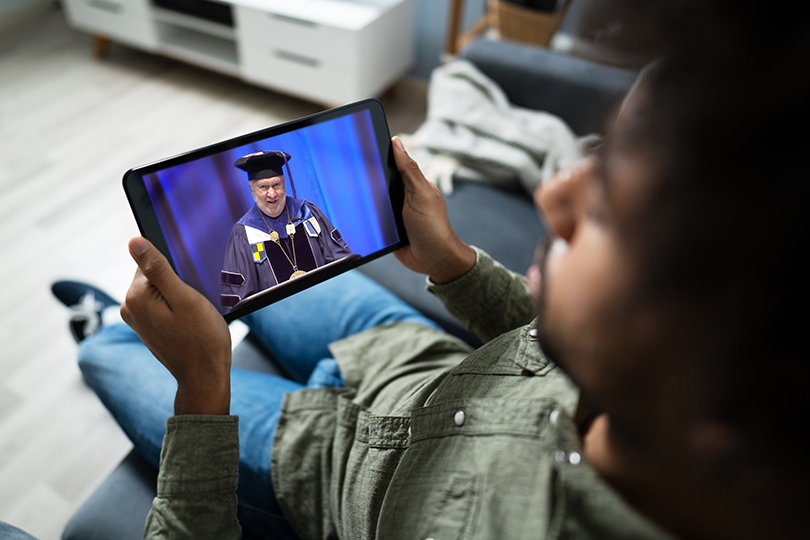
© Copyright Augusta University. All Rights Reserved.

For nearly 200 years, Augusta University and its legacy institutions have been centers of learning and drivers of discovery and innovation in Augusta, the state of Georgia and beyond. Our community of alumni, students, faculty and friends are amazing people living incredible lives and making invaluable contributions to our world.
We are pleased to publish four magazines in which we get to tell their stories: